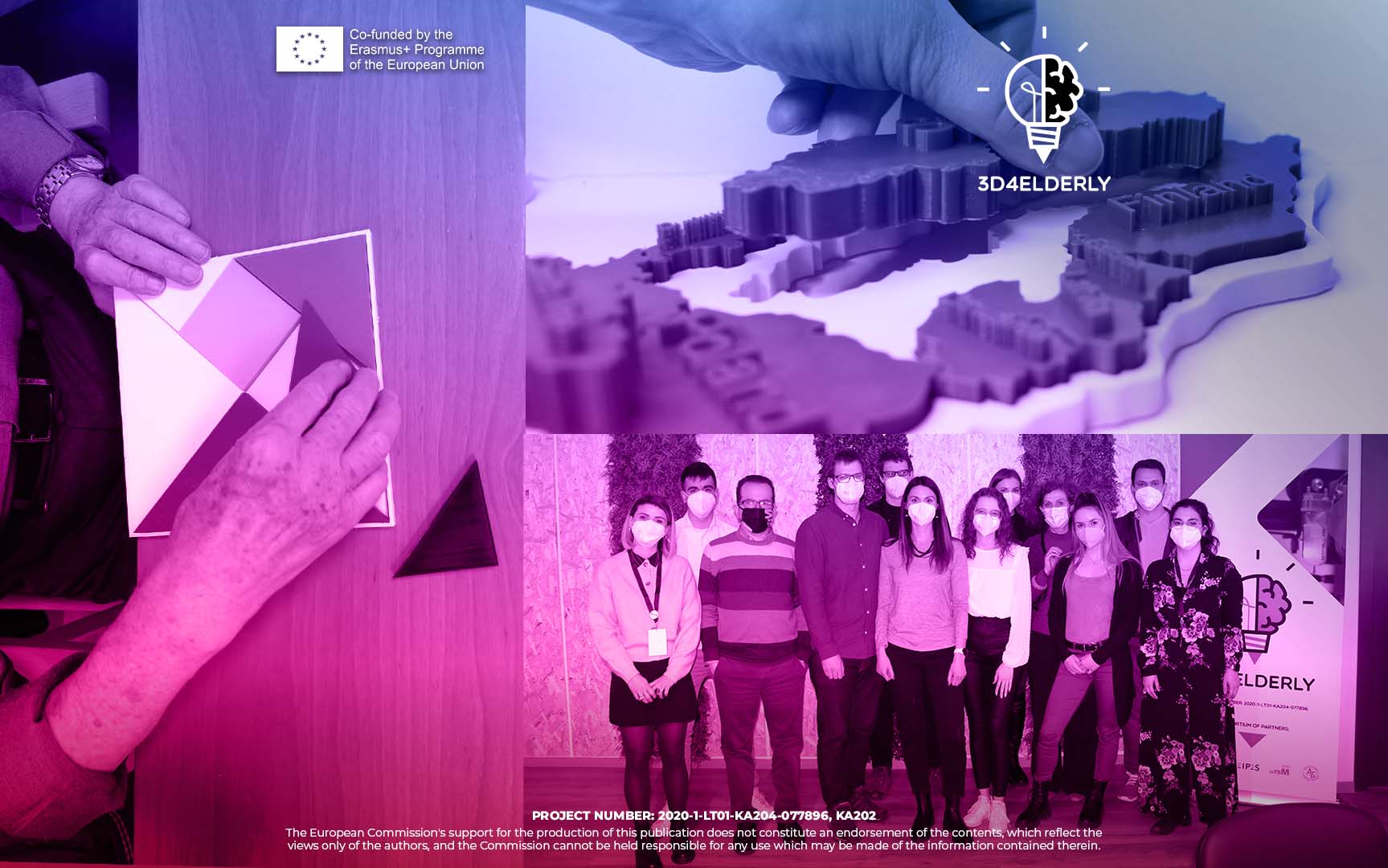3D4ELDERLY
The all completed results and the goals achieved during the lifetime of the project!

With the end of September, the 3D4ELDERLY – 3D printing to create innovative learning pathways for caregivers and staff members dealing with people with Alzheimer and elderly people with dementia – project was brought to the end, with the achievement of several and varied results.
The project has developed innovative learning pathways that aim to increase the quality of the work of caregivers and staff members dealing with people with Alzheimer’s. 3D technology is thought to be something very far from the reality of the caregiver, but through the 3D4ELDERLY project 3D modeling and the use of the 3D printer has justified the objective of being at the service of caregivers.
In the two years of the project, from December 2020 until September 2022, the consortium worked on 4 different intellectual outputs, to ensure that all objectives were achieved.
Alzheimer’s is a degenerative neurological disease that affects the brain, progressively leading the patient to a state of total dependence, thus creating a very complex and difficult situation for the people who care for them. The causes of the disease are still unknown, but there is a multi-factorial origin linked to various factors such as genetics, the environment and lifestyle.
In addition, an important factor is age, in fact the disease mainly develops between 75 and 85 years, however, this may not always affect even some younger people, while others older, over eighty or even centenarians may not find it at all.
The use of 3D printing will help these people by offering them a multisensory experience thanks to the tools created. This technology can be useful to support visual, tactile and therapeutic methods. Practical experience and this technology will help the person to receive an infinite number of requests that have a direct action on the brain areas related to instincts and senses, with positive effects on the cognitive and relational sphere.
After developing a practical guide on how to use the printer, explaining its structure and how to recognize the key features the consortium has implemented other activities, has chosen 17 exercises to be used with their patients or relatives with dementia.
The 17 exercises are taught in all the consortium languages (Italian, Spanish, Bulgarian, Lithuanian and more in English). Thanks to the work of all partners, it was possible to develop all the features for each exercise. In fact, to collect all the information collected for each exercise, the BETI partner, experts in the field of technology and programming, has developed an App for all smartphones. They developed the app in a clear and very accessible way for the project target. In addition, within the app there is a forum with all nursing home centres and centres specializing in 3D printing. This is very useful to ensure the ability to 3D print even for those who have not yet purchased a 3D printer in their facility. Within the app you only need to download the stl file of the chosen exercise and print it in 3D.
Surely everything became real when the partners printed their exercises and were tested by several participants of the local pilot in the partner’s country. This allowed to have a confirmation about the work done, so adjust parts of the exercises. After this, the ABA partner, Alzheimer Bulgaria Association, with all partners support implemented a methodological guideline (therapy guide) to assist in the improvement of memory in Alzheimer’s patients and those with early-onset dementia accessible to all Alzheimer centres. This guide will be a support tool for Alzheimer’s centres and for those who deal with elderly people with dementia, not only at the local but European level.
The entire consortium is very satisfied with the work done, the objectives achieved and with all the partners working together. All partners will stay in touch for any support or need to improve some output.
To keep track of the project and to take advantage from its results, please check the project web site, or Instagram, Twitter, Facebook, LinkedIn.